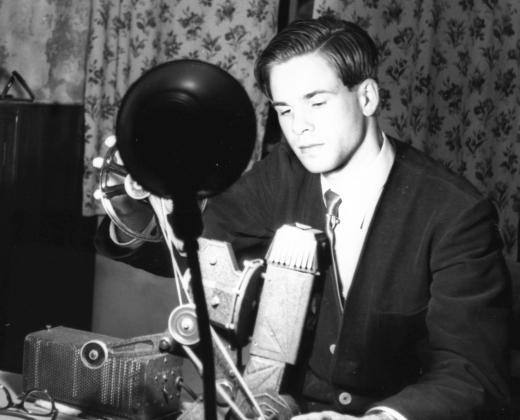
Hong Kong through Michael Rogge's Len

Hong Kong cinema began to thrive in the 1950s, but the focus was on feature films and there were very few documentaries. Fortunately, tourists visiting Hong Kong and expatriates stationed in the city, such as Michael Rogge, Arthur and Denis Bray, recorded much valuable footage. These moving images of life and social conditions in Hong Kong have become extremely important cultural legacies.
Journey to the Far East
Born IJsbrand Cornelius Rogge, Dutchman Michael Rogge has had a passion for photography since young. He took up residence in Hong Kong from 1949 to 1954 and captured the city’s scenery on film. Rogge was transferred to Japan in 1954 and revisited Hong Kong in 1961 when he was commissioned by a Dutch television station to make a documentary about the city - Three Million Souls of Hong Kong (1961-62).
Hong Kong through the Lens
Rogge describes his six-year sojourn in Hong Kong as the best time of his life and the footage he captured during the period are rich in content. Walking Down to Central (1949) captured the scenery along his walk from MacDonnell Road to Central for work. Audiences can easily catch a glimpse of Victoria Harbour. His other works documented everything from colonial buildings in the Mid-Levels to the walled villages and farmhouses in Kam Tin, Yuen Long, as well as underprivileged children making a living by rowing boats at typhoon shelters. Rogge and his amateur film club was invited to film Coronation Festivities in 1953 using five 16mm cameras operated by five cameramen, each filming a different angle.
Hong Kong through Michael Rogge's Len

Hong Kong cinema began to thrive in the 1950s, but the focus was on feature films and there were very few documentaries. Fortunately, tourists visiting Hong Kong and expatriates stationed in the city, such as Michael Rogge, Arthur and Denis Bray, recorded much valuable footage. These moving images of life and social conditions in Hong Kong have become extremely important cultural legacies.
Journey to the Far East
Born IJsbrand Cornelius Rogge, Dutchman Michael Rogge has had a passion for photography since young. He took up residence in Hong Kong from 1949 to 1954 and captured the city’s scenery on film. Rogge was transferred to Japan in 1954 and revisited Hong Kong in 1961 when he was commissioned by a Dutch television station to make a documentary about the city - Three Million Souls of Hong Kong (1961-62).
Hong Kong through the Lens
Rogge describes his six-year sojourn in Hong Kong as the best time of his life and the footage he captured during the period are rich in content. Walking Down to Central (1949) captured the scenery along his walk from MacDonnell Road to Central for work. Audiences can easily catch a glimpse of Victoria Harbour. His other works documented everything from colonial buildings in the Mid-Levels to the walled villages and farmhouses in Kam Tin, Yuen Long, as well as underprivileged children making a living by rowing boats at typhoon shelters. Rogge and his amateur film club was invited to film Coronation Festivities in 1953 using five 16mm cameras operated by five cameramen, each filming a different angle.














